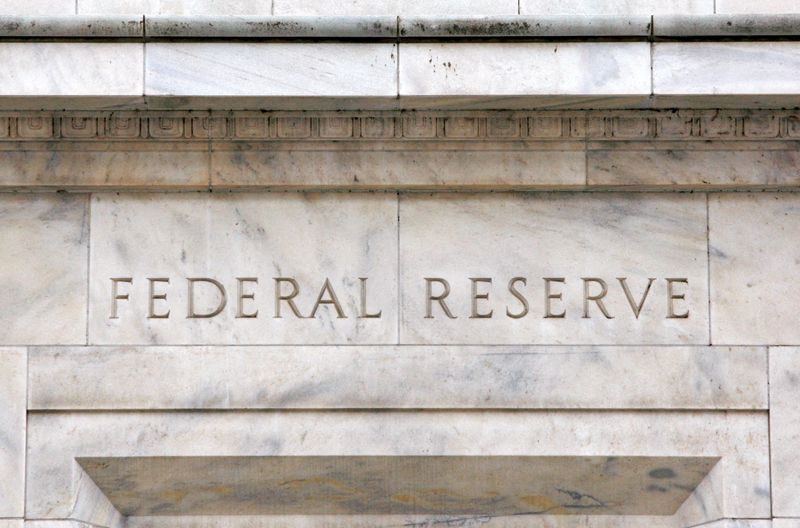By Michael S. Derby
NEW YORK (Reuters) - The Federal Reserve may have to slow or stop shrinking its nearly $9 trillion balance sheet sooner than many now expect, according to a report from Barclays (LON:BARC).
The investment bank's analysts wrote this week that the current pace of the drawdown likely needs to change in the first half of next year. That's because if the Fed were to press forward with allowing its balance sheet to shrink, bank reserves would, by the end of 2023, fall to levels that would complicate maintaining firm control of the federal funds rate, the U.S. central bank's primary tool for influencing the direction of the economy.
So far, Fed officials have given little guidance as to how long and how far they plan to go with cutting the holdings, noting only that they see it as an extended process heading to an uncertain end. "I don't know what the final end point is of our balance sheet," Minneapolis Fed President Neel Kashkari said on Wednesday, but "we have a ways to go."
That end state of the process is tricky due to a number of factors. But the biggest uncertainty is that it is unclear when the financial system moves from ample levels of bank reserves to one where they are scarce.
Scarce reserves mean the federal funds target rate can become volatile, which central bankers do not like. When reserves ran low in September 2019, the Fed was forced to intervene to bolster them through asset-buying and temporary liquidity injections.
Graphic: U.S. bank reserves at the Fed - https://graphics.reuters.com/USA-FED/RESERVES/dwvkdggazpm/chart.png
The Barclays analysis arrives as the Fed is tightening its monetary policy stance on two fronts. Its bid to lower inflation, which has been running at 40-year highs, is driving officials to push up their federal funds target rate range aggressively, with increases likely to spill over into next year.
Withdrawing stimulus has also meant shrinking the size of the Fed's balance sheet. From a size of $4.2 trillion in March 2020, the holdings peaked at around $9 trillion as of last spring due to bond-buying stimulus efforts tied to the coronavirus pandemic. The Fed started drawing down its holdings by $95 billion per month as of September, with holdings now at $8.8 trillion. Amid that decline, bank reserves have been falling.
The Barclays report said that due to changes in the financial system, total reserve levels are likely to come under pressure at higher levels, which means "the current level of bank reserves is probably closer to reserve scarcity than might have been the case before 2015."
The path the Fed is on right now will likely shave off just over $1 trillion from its balance sheet next year, which means reserves will become an issue for monetary policy before the end of the year, the report said.

"Our sense is that these changes to the shape and location of the demand curve for bank reserves will mean that the Fed reaches 'ample' much sooner than it expects," hitting that mark in the first half of 2023, the report said.
The Barclays report acknowledges the Fed could tweak the settings of its rate control toolkit or resort to other measures that could buy it some space on the reserves issue. But those sorts of things only offer a temporary respite, which makes altering the pace of the balance sheet drawdown the more valuable tool.